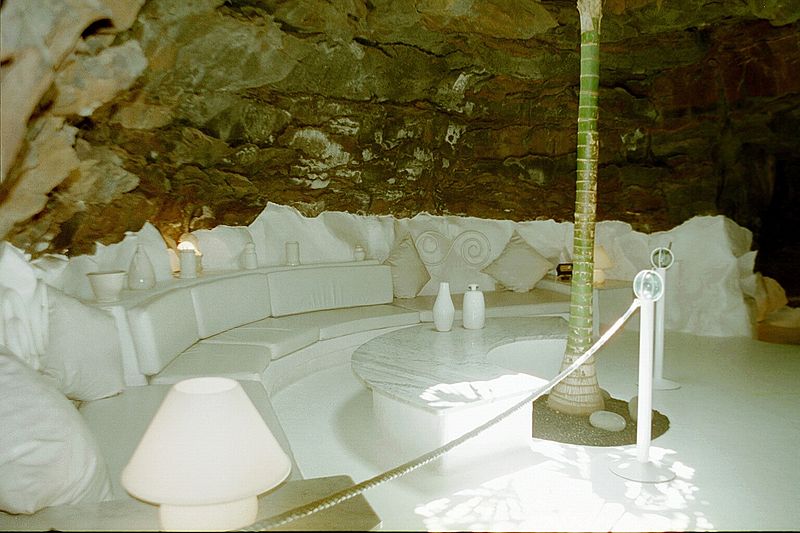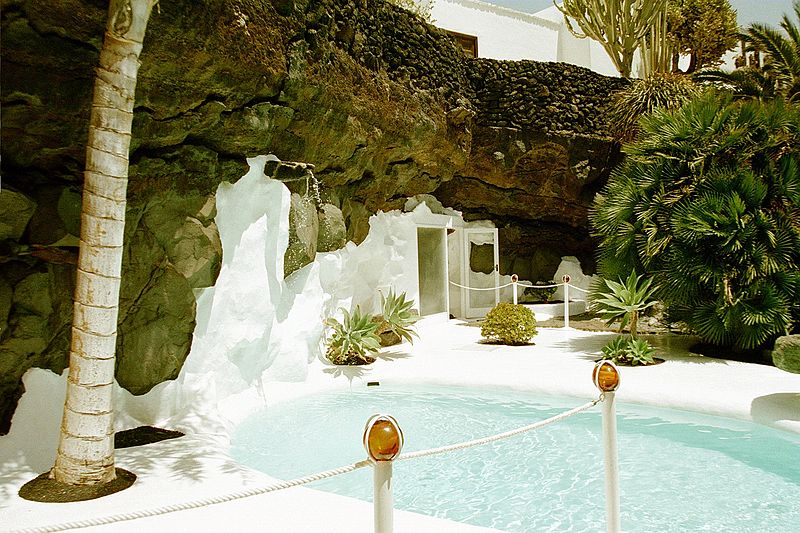Visiting Volcanic Lanzarote on the César Manrique Trail
Are you looking for something different in your next vacation? Head to Lanzarote, the most eastern of the Canary Islands, for a beach vacation like no other. Lanzarote boasts 132 miles of coastline. Of those 132 miles, 16 are sandy beaches, and 114 are rocky beaches.

Wikimedia Commons: Frank Vincentz
First mentioned by Pliny the Elder, Lucan, and Ptolemy, this windswept island has an interesting history. Settlers include Phoenicians, Romans, French, Greeks, Arabs, Portuguese, Castilian, Ottomans, and finally the Spanish (Lanzarote is part of the province of Las Palmas). Lanzarote has had many volcanic eruptions over the years; eruptions from 1730-36 destroyed most of the fertile lands and 11 villages. There is much to do on your Lanzarote holiday - lovely beach resorts and all kinds of water sports, of course, but also land sports, arts, culture, music, food, shopping, nightlife, and wineries.
On Lanzarote, you can’t miss the influence of artist and architect César Manrique. Born in Lanzarote in 1919 (a twin!), Manrique fought in the Spanish Civil War, studied architecture at the University of La Laguna, and received a degree from the Art School of San Fernando. Manrique was influential on Lanzarote’s public planning (consider the island his palette) to such a large degree that “It is impossible to imagine Lanzarote as it stands today without César Manrique. He was a painter, sculptor, architect, ecologist, monument preserver, construction advisor, planner of urban developments, outliner of landscapes and gardens.” http://www.cesarmanrique.com/biografia_i.htm
To Follow the César Manrique Trail in Lanzarote:
Stop at his house, Taro de Tahiche, now the Fundacion César Manrique.
This house was built inside 5 volcanic bubbles in 1968. He used the bubbles to create natural living spaces. The location is now the Foundation (since 1992), and is a modern art museum.

Wikimedia Commons: Gernot Keller
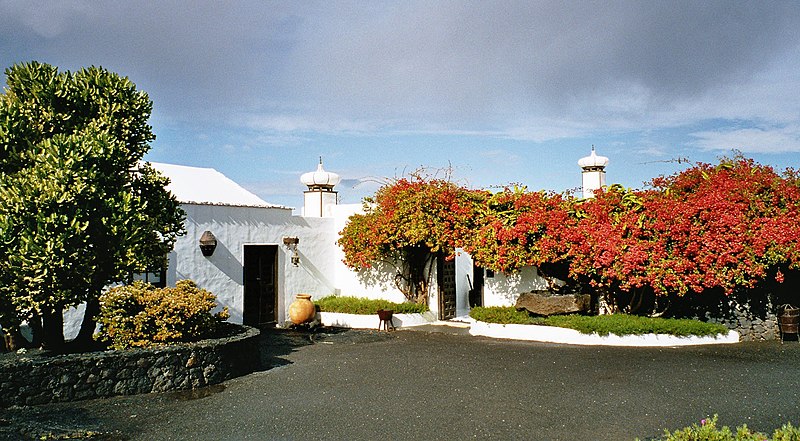
Wikimedia Commons: Alexander Hauck
Wikimedia Commons: edub
Wikimedia Commons: wollex
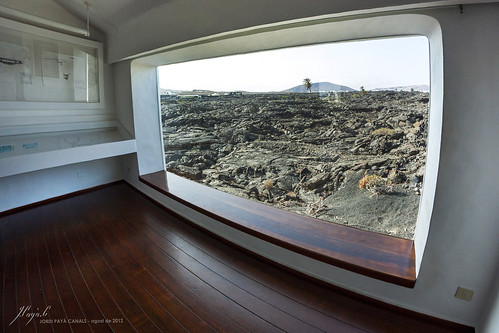
El Taro de Tahíche by Jordi Payà, on Flickr cc
While there, check out the Wind Sculpture Manrique created at Taro de Tahiche.
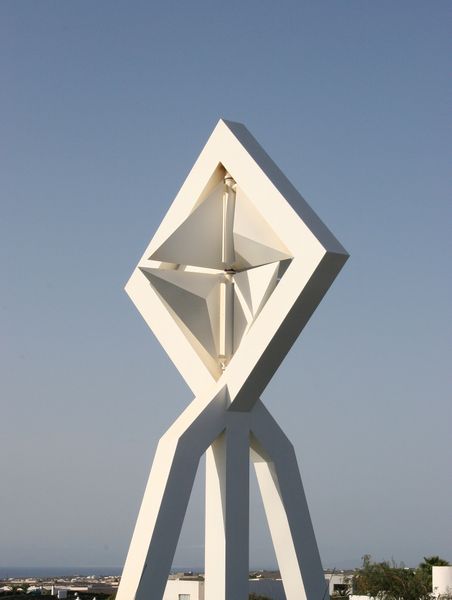
Wikimedia Commons: afrank99
Visit the Grotto of the Jameos del Agua
This is a partially collapsed lava tube and cave that is a nightclub, with a concert hall (Auditorio) that can hold up to 600 people. Don’t miss the underground pool, or the bar and restaurant. This is part of the famed Tunnel of Atlantis, the largest underwater volcanic tunnel system in the world. While here, keep an eye out for blind albino crabs (Munidopsis polymorpha). These jameitos are the symbol of Jameos del Agua.

Those tiny crabs! Wikimedia Commons: Frank Vassen

Concert Hall. Wikimedia Commons: afrank99

Wikimedia Commons: hjs fotografie

Restaurant in Jameos del Agua. Wikimedia Commons: Frank Vincentz
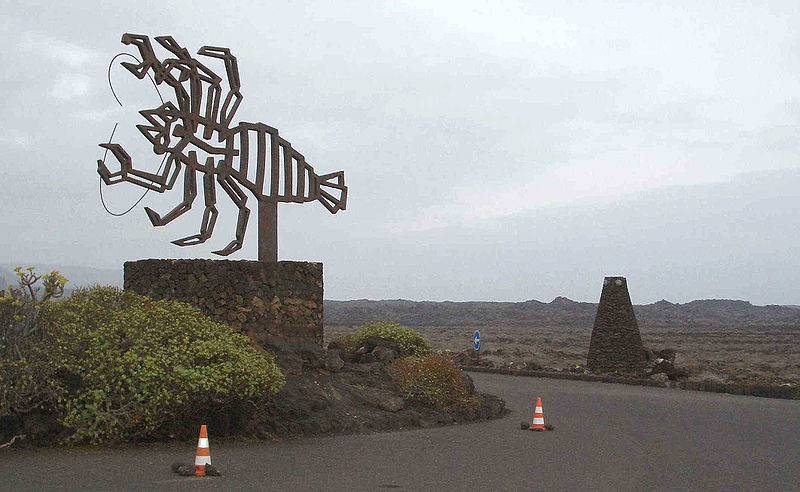
Jameos del Agua sign. Wikimedia Commons: KaHe
Take in the viewpoint at Mirador del Rio
Built in 1974, this 475 meter-high escarpment provides lovely views toward the island of La Graciosa. You can also find a bar, café, and souvenir shop.
Wikimedia Commons: Vcarceler

Wikimedia Commons: afrank99

Wikimedia Commons: afrank99
Watch your fingers at the Jardín de Cactus
This is a cactus garden Manrique designed to pair art and nature. Located in Guatiza.
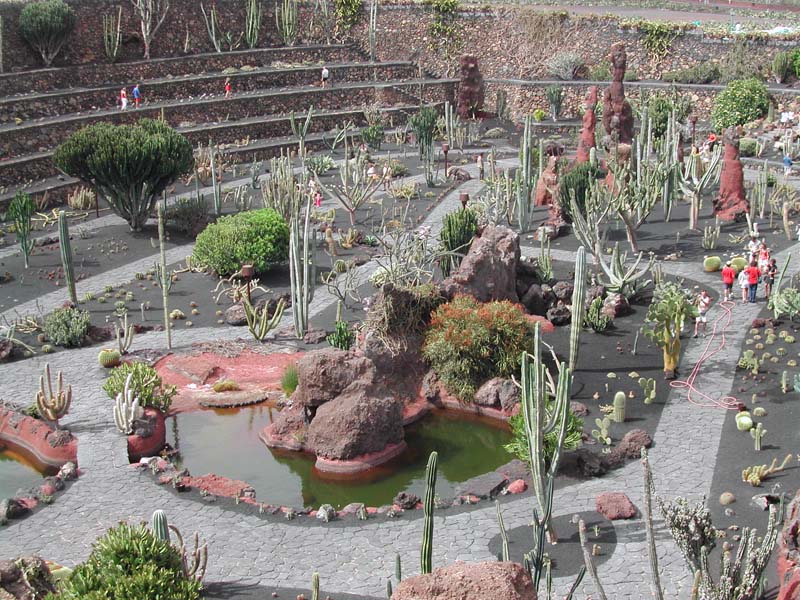
Wikimedia Commons: Peter Gerstbach
Visit the Parque Nacional de Timanfaya
The logo at the entrance (El Diablo) was designed by Manrique.

Wikimedia Commons: Montek
You’ll find where to ride camels in the park via this sculpture Manrique made:

Wikimedia Commons: Frank Vincentz
Visit the Palacio Spinola
Located in Teguise, a charming town with a large Sunday morning market. The Palacio was a renaissance mansion restored and converted into a museum by Manrique. It is currently a Government Official Residence with occasional art exhibitions, but is open to the public Sunday-Friday, closed Saturdays.
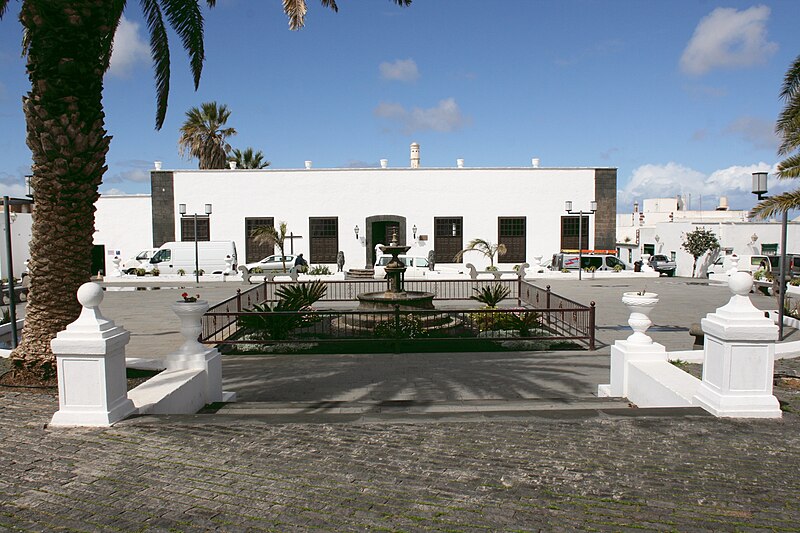
Casa Museo Palacio Spinola. Wikimedia Commons: Frank Vincentz
Explore La Caleta de Famara
This is a small fishing village where Manrique grew up. Wander the streets and beach (it’s the beginning of Playa de Famara, a long white-sand beach), and imagine Manrique’s natural inspirations.

Wikimedia Commons: Marc Ryckaert
Stop by the village of Mozaga to see the Monumento al Campesino
This monument was designed in 1968 by Manrique, and built by Jesus Soto. In this town, you can also see Casa Museo del Campesino, an old farmhouse that was restored and is now a museum showcasing rural life on Lanzarote.
Wikimedia Commons: Frank Härtelt
Head to Masdache
Before you enter the village, spot César Manrique’s Monumento al Pájaro Grifo – a large griffin statue that guards the entrance to the Bodega el Grifo, one of Lanzarote’s largest bodegas (wineries). There’s also a museum where you can learn about the history of winemaking on the island.

http://www.elgrifo.com/cesar-manrique

Wikimedia Commons: Frank Vincentz
Check out the beautiful wind sculptures located at various points on the island

Wikimedia Commons: Hein.Mück
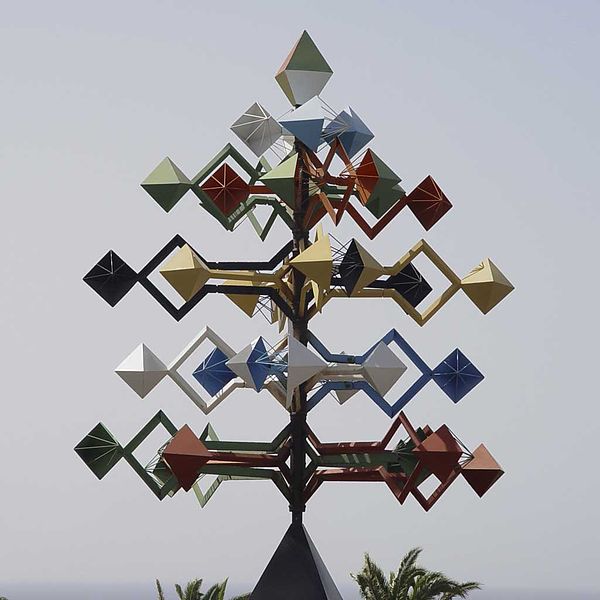
Wikimedia Commons: Gatm
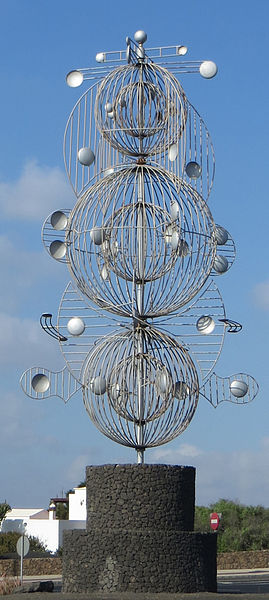
Wikimedia Commons: Fabi009

Wikimedia Commons: Alinea
Lastly, pay your respects at his grave, in the cemetery of Haría, Calle Vista del Valle in Haría

Wikimedia Commons: Frank Vincenz

Wikimedia Commons: Alinea
Learn more at http://www.cesarmanrique.com/
Are you looking for something different in your next vacation? Head to Lanzarote, the most eastern of the Canary Islands, for a beach vacation like no other.
Posted by: Jessica Voigts


